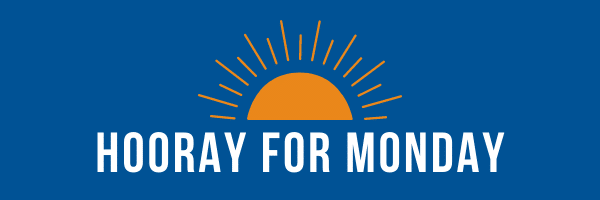August 16, 2021
By Aleta Margolis, Founder and President, Center for Inspired Teaching
Hooray for Monday is a weekly blog filled with questions, ideas, reflections, and actions we can all take to remodel the school experience for students.

For many students and teachers across the country, school starts today. And we have a lot on our minds. Navigating the ever-changing mask mandates, vaccine status of adults and kids, plans to group-kids-together-while-spacing-them-apart, and the like is a full-time job. Whether you’re welcoming students to your school building today, next week, or in the weeks to come, it is completely logical to focus solely on getting through this difficult year and relegate hope to something we’ll take a swing at next year.
But, as always, our view depends upon our vantage point.
In the midst of the urgent conversations about covid safety, there’s value in carving out a moment to step back and consider the bigger picture – why school is important, why we’ve chosen to devote our year, a portion of our careers, or even our entire careers to teaching children. If we take a moment to do this, we’ll likely remind ourselves that hope is at the core of our work as teachers.
When we teach, we create experiences for and with students through which we hope they will learn something: addition or compassion or subject-verb agreement or civic responsibility. We spend time sitting one on one with a student who is frustrated with writing an essay or struggling to understand photosynthesis because we hope to teach them to develop a personal voice or spark in them a love of botany. We invest hours coaching our students through interdisciplinary projects because we hope their intellectual curiosity will be fueled, and their research skills refined – and then we hope further that they will apply those skills in other areas of their lives, long after the project is completed.

We do our best to find out if our students achieve the outcomes we hope for – and the debate continues about the most effective and ethical means for assessing student learning. But regardless of what the assessments do or don’t tell us, the real results of our teaching blossom months and years after each student moves on from our class.
And so we hope now, as we always have, that our investment in our young people bears fruit.
There’s an important distinction between hope and toxic positivity. Toxic positivity refers to an attitude or comment or policy that insists we deny reality, that we ignore the difficulties of the present moment, and just keep our chins up and marshal through the darkness until the light appears. Hope, however, means believing that the effort we put in today will cause something to bloom tomorrow. It may feel strange, even out of touch, to allow ourselves to get excited about the YA literature we plan to read with our middle schoolers or the science experiments we’ve designed or the upcoming auditions for the school play, in the midst of the continuing health crisis. But excitement and worry can coexist.
Two weeks ago Jenna’s piece When the Opposite is Also True explained how opposite things can be true simultaneously. It is true that we are preparing to open school in the midst of a continuing health crisis. It is also true that our students (and ourselves, if we stop to think about it) are wired to learn, to wonder, to engage with the world with curiosity and joy – even in the midst of a pandemic.
Last week, we held our August Inspired Teaching Excursion at the beautiful and vibrant Huntley Meadows just outside Washington, DC. Though the temperatures rose well into the 90s, our teacher-participants searched for green frogs beneath the duckweed on the surface of a pond; identified woodpeckers, great blue herons, and wild turkeys; and learned about the role of observation in data collection and textual analysis. We tried to track the number of questions participants asked the naturalist who joined us, but there were so many we couldn’t keep up. Teachers engaged with one another from a place of wonder and curiosity. Gazing at wildlife through binoculars, collecting photos on smartphones and written observations in paper notebooks, and exchanging recommendations for the best nature apps on a sweltering day in late summer, all for the purpose of crafting engaging, inquiry-based lesson plans for students – that’s the very definition of hope.
Embarking on this new school year from a place of hope means:
- Listening to kids. Observing them with the same curiosity and appreciation (and lack of judgment!) we bring when we look at natural wonders.
- Finding out what students have learned in the past year, even as we probe to find out what they’ve missed out on learning.
- Avoiding delivering lessons – and prioritizing authentic engagement.
- Asking students to share their hopes for this school year, and sharing our own hopes with them.
- Inviting students to share their worries and concerns too, and being willing to share some of ours.
- Prioritizing building relationships with students so we can work together with them to ensure learning happens this year, no matter what the logistics look like.
Hope isn’t something to hold onto; it’s something to build. May we all build hope this coming week and all year long.
